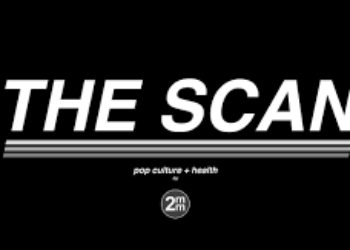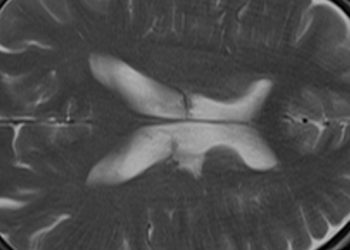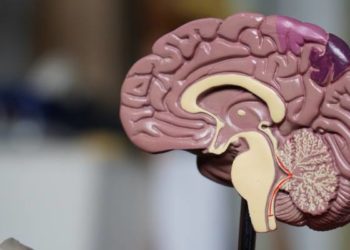2 Minute Medicine Rewind August 4- August 11, 2013
Image: PD
In this section, we will highlight the key high-impact studies, updates, and analyses published in medicine during the past week.
Microbial preparations have been proposed as a potential treatment for antibiotic-associated diarrhea, most notably that caused by Clostridium difficile, however there have been only small single-center trials to assess such treatment’s effectiveness. In this randomized control trial, 2991 inpatients aged 65 years or older who were previously exposed to antibiotics were randomized to either a multistrain preparation of lactobacilli and bifidobacteria for 21 days or to placebo. Diarrhea occurred in 159 (10.8%) patients in the intervention group and 153 (10.4%) patients in the placebo group (RR 1.04, 95% CI 0.84-1.28, p=0.71) with C. difficile diarrhea occurring in 12 (0.8%) patients in the intervention group compared with 17 (1.2%) patients in the placebo group (RR 0.71, 95% CI 0.34-1.47, p=0.35). In conclusion, there was therefore no evidence that multistrain preparation of lactobacilli and bifidobacteria was effective in preventing antibiotic-associated diarrhea, including diarrhea due to C. difficil infection.
The avian influenza A (H7N9) virus, recently emerged in Eastern China, can cause severe pneumonia and acute respiratory distress syndrome (ARDS). Contact with poultry is a known transmission mechanism, but there has yet to be a formally established case of human-to-human spread. In this epidemiological investigation, investigators collected samples from two patients, their close contacts, and the environment in Wuxi, China, testing samples with real time reverse transcriptase-polymerase chain reaction, viral culture, and hemeagglutination inhibition assay. H7N9 strains isolated from two patients (a father and daughter) were found to be 99.6 to 99.9% identical by phylogenetic analysis. There was no virus isolated in all 43 other close contacts. Given the almost identical genetics of the strains and that the daughter had no known exposure to poultry before contracting the disease, researchers conclude that this most likely represents a case of human-to-human spread. The virus has poor transmission from person-to-person given the absence of infection in all other close contacts.
Risk Factors Associated With Suicide in Current and Former US Military Personnel
The incidence of suicide in the US military personnel, assumed to be related to stressors from frequent combat deployments, has sharply increased since in 2005. This prospective longitudinal study included 151,560 US military personnel from the Millennium Cohort Study and investigated predictive factors for the primary outcome of death by suicide. From 2005-2008, there were 83 suicides for 707,493 person-years (11.73/100,000 person-years, 95% CI 9.21-14.26). Multivariate Cox regression models found that suicide risk was not associated with deployment-related factors (combat experience, cumulative days deployed, or number of deployments). However, there was a significantly increased risk for suicide for individuals who were male (hazard ratio (HR) 2.14, 95% CI 1.17-3.92, P= .01, attributable risk (AR) 3.5 cases/10 000 persons), had depression (HR 1.96, 95% CI 1.05-3.64, P= .03, AR 6.9/10 000 persons), manic-depressive disorder (HR 4.35, 95% CI 1.56-12.09, P = .005, AR 35.6/10 000 persons), or alcohol-related problems (HR 2.56, 95% CI 1.56-4.18, P <.001, AR 7.7/10 000 persons). These results suggest that treating and preventing the development/exacerbation of mental health and substance abuse disorders may prevent suicide deaths among military personnel.
This paper summarizes results for the secondary objective of the third International Stroke Trial (IST-3), which was to assess the effect of thrombolysis at 18 months on functional outcomes as measured by the Oxford handicap scale (OHS) and EuroQualityofLife (EQ) instrument. IST-3 is an international randomized control trial with 3035 patients with ischemic stroke who were allocated to receive, within 6 hours of stroke onset, intravenous alteplase plus standard care or standard care alone. After 18 months, 408 (34.9%) of 1169 patients in the intervention group had died compared with 414 (35.1%) of 1179 patients in the control group (P=0.85). Although there was no difference in mortality, 35.0% of patients in the intervention group had an OHS score of 0-2 versus 31.4% of patients in the control group (adjusted odds ratio (OR) 1.28, 95% CI 1.03—1.57, P=0.024). Similarly, the alteplase group also had significantly higher self-reported EQ scores (adjusted mean difference in EQ utility index 0.060, P=0.019). These results suggest that thrombolysis with intravenous alteplace after acute ischemic stroke may not effect survival but does result in long-term improvements in functional outcomes and health-related quality of life.
Atherosclerosis across 4000 years of human history: the Horus study of four ancient populations
It is commonly assumed that atherosclerosis is a disease of modern human lifestyles. However, the prevalence of atherosclerosis in preindustrial populations has not previously been investigated. In this retrospective study, 137 mummies from four distinct populations spanning over 4000 years (ancient Egyptians, ancient Peruvians, Ancestral Puebloans of southwest America, and unangans of the Aleutian Islands) were subject to whole body CT scans to look for evidence of atherosclerosis. Atherosclerosis was detected in 47 (34%) of the mummies: 29 (38%) of 76 ancient Egyptians, 13 (25%) of 51 ancient Peruvians, 2 (40%) of 5 Ancestral Puebloans, and 3 (60%) of 5 Unangan hunter-gatherers (p=NS). When broken down by specific arteries, atherosclerosis was detected in the aorta of 28 (20%) mummies, iliac/femoral arteries in 25 (18%), popliteal/tibial arteries in 25 (18%), carotid arteries in 17 (21%) and coronary arteries in 6 (4%). The mean age at death for mummies with atherosclerosis was 43 (SD 10) versus 32 (SD 15) for those without atherosclerosis (p<0.001). This suggests that atherosclerosis may not be completely an artifact of modern post-industrial lifestyles and that humans may possess an intrinsic predisposition to the disease.
By Neal Yuan and David Ouyang
© 2013 2minutemedicine.com. All rights reserved. No works may be reproduced without written consent from 2minutemedicine.com. Disclaimer: We present factual information directly from peer reviewed medical journals. No post should be construed as medical advice and is not intended as such by the authors or by 2minutemedicine.com. PLEASE SEE A HEALTHCARE PROVIDER IN YOUR AREA IF YOU SEEK MEDICAL ADVICE OF ANY SORT. Content is produced in accordance with fair use copyrights solely and strictly for the purpose of teaching, news and criticism. No benefit, monetary or otherwise, is realized by any participants or the owner of this domain.







